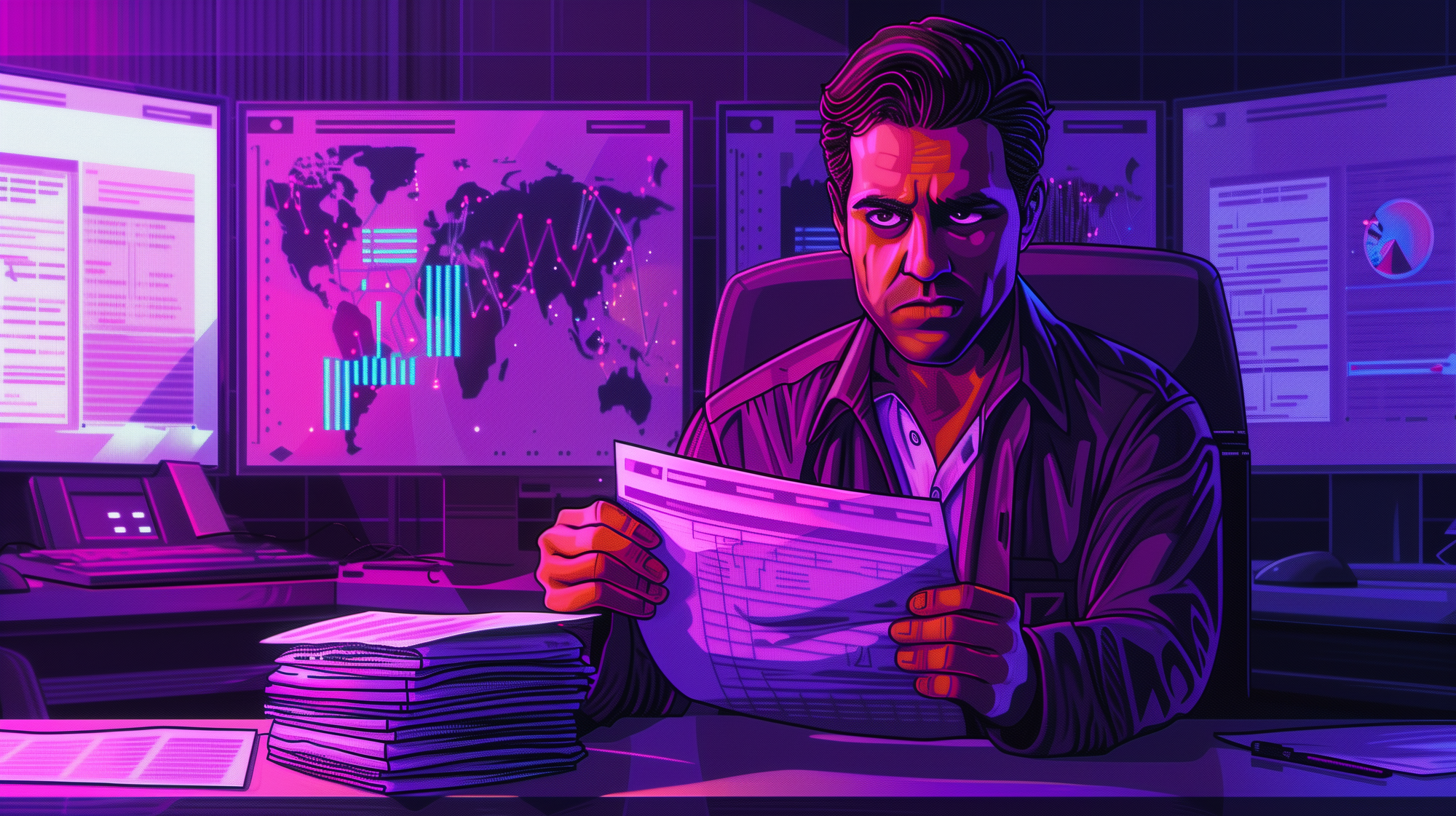
Cyber Threat Intelligence Is Desperate for a Revolution
The cyber threat intelligence industry is stagnant, overpriced, and fails to solve real-world problems. Legacy vendors cling to outdated methods, while startups lack innovation. The industry needs bold disruption to deliver actionable, accessible solutions. The time for revolution is now.
The global cyber threat intelligence industry stands at a precipice, teetering between stagnation and irrelevance. Over the past five years, the industry’s titans have demonstrated an unforgivable failure to evolve. They cling to outdated paradigms, recycling tired solutions and presenting them as progress. What once served as a dynamic force in the defense of organizations worldwide has withered into a hollow shell, devoid of innovation and purpose.
The incumbents have made little to no meaningful progress with their threat intelligence solutions. They promote superficial enhancements providing little to no real value to their customers. Incremental updates fail to address core issues, leaving platforms inefficient and incapable of delivering actionable intelligence. Their user interfaces remain cluttered, confusing, and fundamentally unusable, burdening security teams instead of empowering them. These products hinder defenders at a time when adversaries demand faster, smarter responses. This is not innovation. It is stagnation masked as progress.
Senior leadership within organizations frequently misunderstands the true return on investment cyber threat intelligence delivers. Many Chief Information Officers (CIO), and even Chief Information Security Officers (CISO), struggle to articulate how cyber threat intelligence creates actionable outcomes. This lack of understanding leads to misaligned budgets, underfunded teams, and the adoption of solutions chosen for marketing appeal rather than operational relevance. Executives treat intelligence as an expense instead of a critical weapon in their arsenal, further reinforcing the industry’s systemic stagnation.

CrowdStrike, Google (aka Mandiant), Recorded Future, and other similar vendors exemplify this failure. Their overvalued products come at exorbitant prices, affordable only to organizations with massive budgets. This exclusionary model undermines the foundational purpose of cyber threat intelligence, which should equip defenders of all sizes and capabilities. Selling intelligence as an inaccessible luxury rather than a necessity harms both customers and the broader ecosystem. Their actions prioritize profit over solving meaningful problems.
These vendors compound the issue by focusing resources on intelligence reports serving the egos of their analysts rather than the needs of their customers. While organizations sometimes derive value from these reports, this utility occurs despite their narrative, not because of it. These reports fail to solve real-world problems because they aim to showcase intellectual achievements instead of addressing operational challenges. A vast gap exists between what these reports offer and what customers require. Furthermore, the North America-centric focus of these solutions leaves markets in Asia, the Middle East, Europe, and other regions severely underserved. Their approach fails to recognize the global nature of threats.
Meanwhile, a wave of startups has emerged, but they offer little to no meaningful disruption. Many myopically focus on dark web monitoring and external attack surface management (EASM), which are useful tools but not complete products. EASM falls outside the scope of cyber threat intelligence entirely, serving as a basic risk management capability. Dark web monitoring should function as a feature of full-spectrum intelligence solutions, not a standalone offering. These startups crowd the space with redundant tools based on identical datasets, similar workflows, and indistinguishable outputs. They perpetuate the industry’s inertia by solving niche problems while ignoring the systemic challenges plaguing defenders deep in the cyber trenches. Threat actors innovate daily, yet these companies deliver unimaginative solutions unworthy of the moment, and rarely are they remaining neck-and-neck with the adversaries they allegedly track.

The industry has betrayed the very organizations it claims to protect. Legacy vendors and uninspired newcomers alike profit from an ecosystem overcharging for inefficiency and underdelivers on substance. They have transformed cyber threat intelligence from a crucial pillar of defense into a luxury item, accessible only to the wealthiest and most resource-rich organizations. Customers are left with tools incapable of moving at the speed of threats, workflows creating confusion instead of clarity, and intelligence remaining theoretical when action is desperately needed. This failure is not simply stagnation; it is an insult to those who stand on the front lines of defense every day.
The industry profits from fear while failing to deliver solutions. This parade of mediocrity has gone on for far too long, leaving customers stranded with labyrinthine systems and unreadable reports analysts create to satisfy their own egos. The fundamental promise of cyber threat intelligence — to provide defenders with actionable insights they can regularly rely on — has been abandoned in favor of marketing jargon, profit margins, and utter hubris. The lack of vision is not just a failure of leadership. It is a moral bankruptcy leaving countless organizations exposed to highly sophisticated adversaries who do not wait for vendors to figure out their next quarterly product update.
The industry demands a reckoning. The time has come for a visionary startup to shatter this broken model and replace it with something bold, something new, something revolutionary. This is not the moment for incremental changes or another polished dashboard. This is the moment for a complete reinvention. The future of cyber threat intelligence depends on platforms outpacing adversaries, delivering actionable intelligence the instant it is received, and empowering defenders with tools so intuitive and effective they become second nature.

This revolution requires more than technology. It requires vision.
The next great disruptor must treat intelligence not as a product but as a mission. It must solve the problems defenders face every day with an unrelenting focus on speed, clarity, and action. It must challenge every assumption the industry clings to and replace mediocrity with excellence, confusion with precision, hideousness with beauty, and stagnation with purpose.
The defenders of tomorrow deserve better. They deserve tools that work for them, intelligence empowering them, and solutions meeting the moment. The void left by the industry’s failure is an opportunity waiting for the bold, the fearless, and the revolutionary. Disruption is not an option. It is an absolute necessity. The future of cyber threat intelligence belongs to those brave enough to seize it and daring enough to rewrite its rules.
The parade is over. Let the storm begin.
In the late 1800s, the Ottoman Empire, once a bastion of innovation and power, became known as the “Sick Man of Europe.” Its refusal to adapt to the changing realities of warfare, economics, and governance doomed it to obsolescence as more agile and visionary powers rose to dominance.
The cyber threat intelligence industry now stands on the same precipice, clinging to outdated methods and inflated self-importance while failing to meet the challenges of the modern era. If it continues to stagnate, it too will crumble, swept aside by those who refuse to settle for mediocrity.
The lesson is clear: the time for disruption is not tomorrow. It is now.

Support Praeryx Content
Are you passionate about advancing your understanding of cyber security and cyber threat intelligence, and want to see more in-depth, thought-provoking content like this? Consider supporting Praeryx in our mission to educate and empower with a donation directly contributing to the continued creation of valuable resources and insights, helping Praeryx to provide impactful and timely content. Join us in building a more secure digital future by donating today!
Donate to Praeryx





